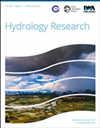Multi-criteria analysis using satellite images and the GIS for mapping groundwater recharge zones in Saudi Arabia: a case study of the Riyadh Region
IF 2.4
4区 环境科学与生态学
Q2 Environmental Science
引用次数: 0
Abstract
Water scarcity is well pronounced in arid and semiarid regions where potential evapotranspiration exceeds precipitation. Saudi Arabia is one of the most water-scarce regions worldwide where there are only 2 billion m3 of annual renewable freshwater resources, besides 24 billion m3 of freshwater withdrawal, especially from the aquifers with fossil water. In Saudi Arabia, floods often occur and the harvest of flood water for groundwater recharge became an issue of discussion; however, this requires determining groundwater recharge potential (GWRP) zones where water naturally percolates and feeds the depleted aquifers. This study aims to produce a detailed (digital) map for GWRP zones for the Riyadh Region by using a multicriteria approach where datasets were derived from satellite images (Landsat 7 ETM+, Spot-5, and Aster) associated with thematic maps and field surveys. The geo-information system (GIS) was also used to manipulate and integrate the geospatial data layers which represent the controlling factors on GWRP. Results show five classes of GWRP zones, where about 36,448 km2 (89.2% of the Riyadh Region) belong to high and very high GWRP. The resulting map will be key information for decision-makers to select suitable localities for groundwater artificial recharge techniques as an adaptive measure for the changing climate.利用卫星图像和地理信息系统绘制沙特阿拉伯地下水补给区的多标准分析:以利雅得地区为例研究
在潜在蒸散量超过降水的干旱和半干旱地区,水资源短缺非常明显。沙特阿拉伯是世界上最缺水的地区之一,每年只有20亿立方米的可再生淡水资源,除了240亿立方米的淡水提取,特别是来自含化石水的含水层。在沙特阿拉伯,洪水经常发生,收集洪水补给地下水成为人们讨论的问题;然而,这需要确定地下水补给潜力(GWRP)区域,在这些区域,水自然渗透并补给枯竭的含水层。本研究旨在通过使用多标准方法为利雅得地区的GWRP区域制作详细的(数字)地图,其中数据集来自与专题地图和实地调查相关的卫星图像(Landsat 7 ETM+、Spot-5和Aster)。利用地理信息系统(GIS)对代表GWRP控制因子的地理空间数据层进行处理和整合。结果表明,利雅得地区有5类GWRP区,其中高和超高GWRP区面积约为36448 km2(占利雅得地区总面积的89.2%)。由此产生的地图将成为决策者选择地下水人工补给技术的合适地点的关键信息,作为应对气候变化的适应性措施。
本文章由计算机程序翻译,如有差异,请以英文原文为准。
求助全文
约1分钟内获得全文
求助全文
来源期刊

Hydrology Research
Environmental Science-Water Science and Technology
CiteScore
5.30
自引率
7.40%
发文量
70
审稿时长
17 weeks
期刊介绍:
Hydrology Research provides international coverage on all aspects of hydrology in its widest sense, and welcomes the submission of papers from across the subject. While emphasis is placed on studies of the hydrological cycle, the Journal also covers the physics and chemistry of water. Hydrology Research is intended to be a link between basic hydrological research and the practical application of scientific results within the broad field of water management.
 求助内容:
求助内容: 应助结果提醒方式:
应助结果提醒方式:


